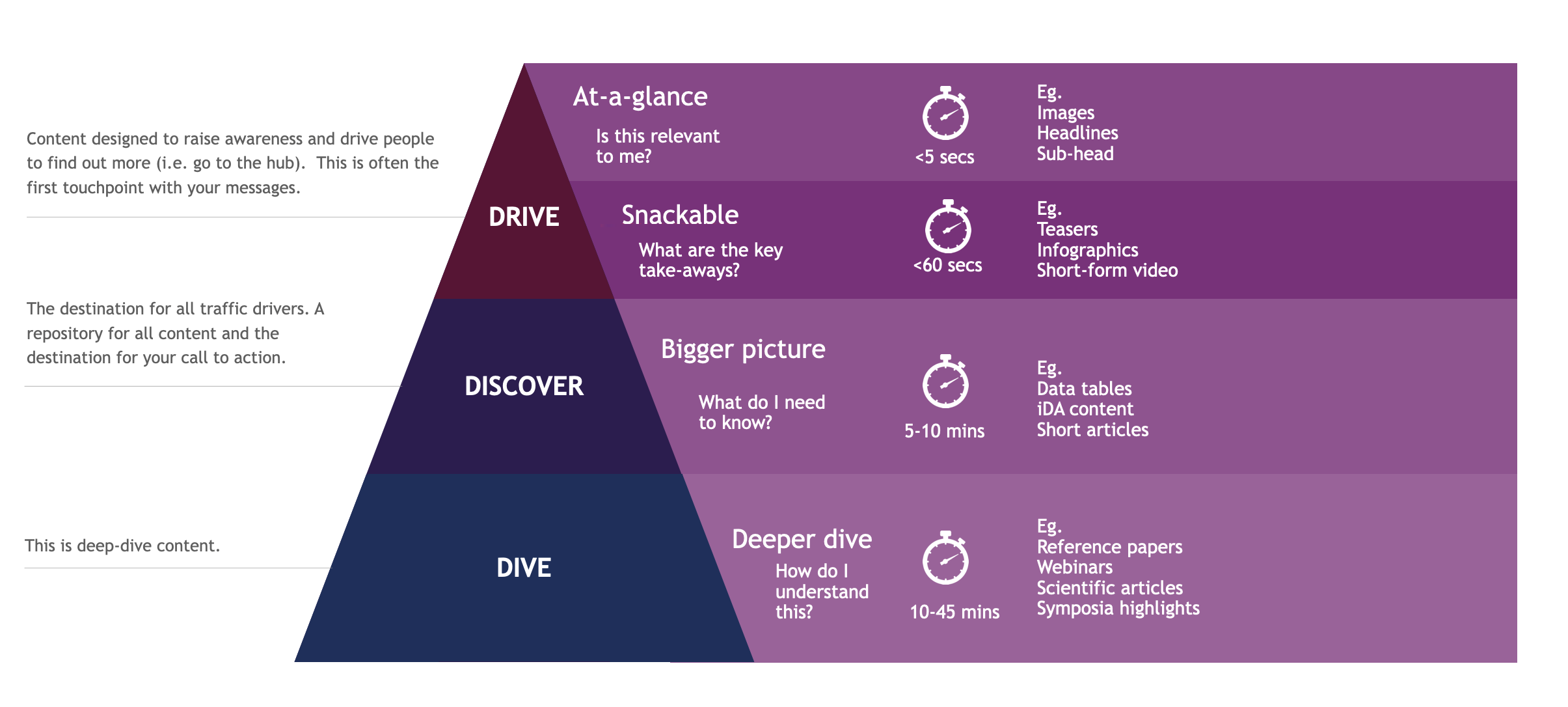Insights / Articles
Drive, Discover, Dive
Written on Wednesday, May 17, 2023
“Simple can be harder than complex: you have to work hard to get your thinking clean to make it simple. But it’s worth it in the end because once you get there, you can move mountains”. One of my favorite Steve Jobs quotes. Why? Because we tend to make things complicated quickly when, in fact, we should be looking at defining the problem as simply as possible before even beginning to think about solutions.
And omnichannel is an area of healthcare communications that is, if you are to believe the many LinkedIn articles from omnichannel experts, a discipline riddled with complexity. We talk about personas (why not personae?), digital integration, user experience, snackable content – all good stuff, but it is somewhat overwhelming to the uninitiated.
Broadly speaking the issue is, how can we get our wonderful content to the healthcare professionals in the right channels, in the right format, at the right time. Move away from simply pushing a message to understanding what healthcare professionals (HCPs) are looking for and where and then delivering content appropriately. And, for many, omnichannel is about that trade-off between consistency and personalization – that we say the same thing, albeit tweaked for the channel/format and for that audience type.
Let’s make it even simpler. What if we look at omnichannel through the lens of attention: the attention of our audience? How much time can we feasibly ask from our time-starved specialist/GP to get them to listen to our new data/brand message? Maybe we don’t look at delivering the whole enchilada (in terms of messaging) in the first touchpoint with them?
Here’s a diagram to illustrate the point:

The time, indicated by the stopwatch, is the amount of attention we are asking from our HCPs. This is the crux of our omnichannel engagement plan. So when we think about putting out some ground-breaking content, we think backwards from the whole enchilada: what is it we want (ultimately) our audience to see? Then, how can we create something in stages that asks a little bit less each time in terms of their attention until we end up with the smallest entry point to that big message?
Now, just to test the theory, let’s play that forwards. The triangle starts at the sharp point (the smallest point) and gets wider and bigger as you move down, reflecting our user journey in terms of message and attention – everything gets bigger the more you move towards the ultimate destination (the deep dive content).
Simple.
I’m not suggesting that this now “solves” omnichannel but it is an effective way of looking at how we can take folk on a content journey with a new focus. Attention.
Visit our website to learn more about how we unlock possibilities in creative communications.
Working in partnership with our clients, we embrace our different perspectives and strengths to deliver fresh thinking and solutions that make a difference.
Together we can unlock possibilities.
For information about OPEN Health’s services and how we could support you, please get in touch.